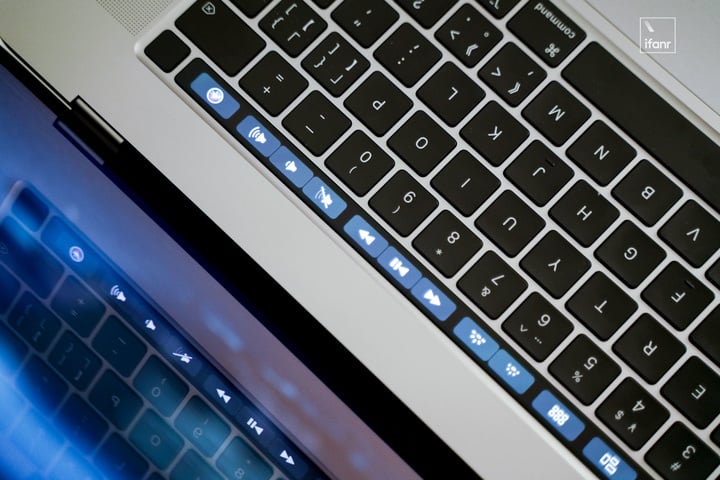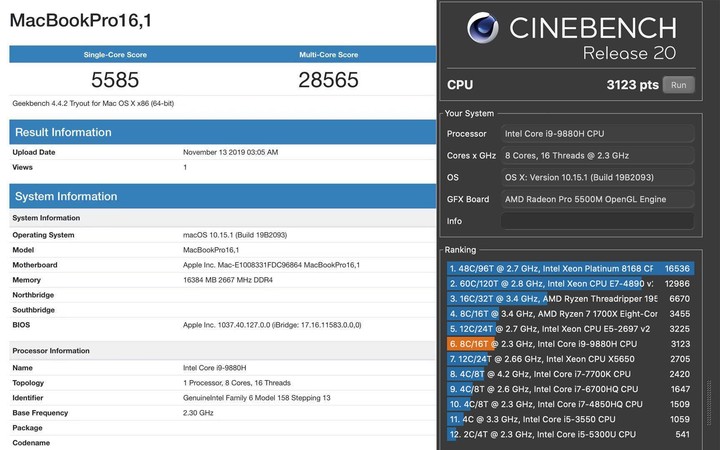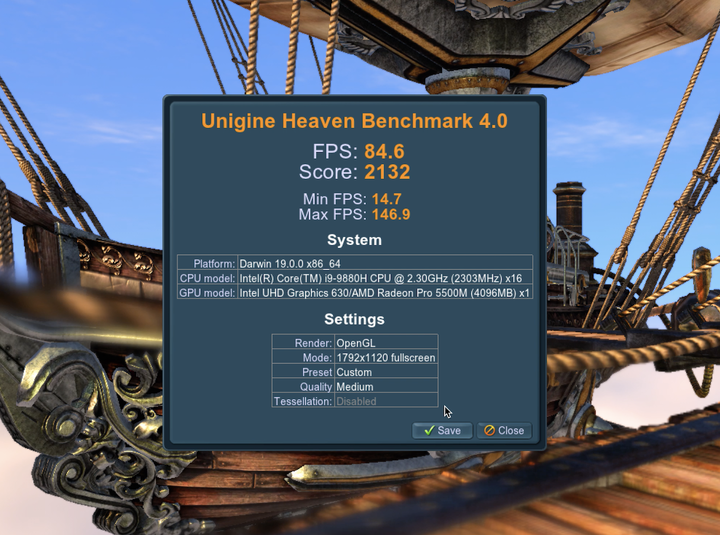On November 13th, the long-awaited 16-inch MacBook Pro was officially released, starting at $18,999.
This is the second time Apple has made a product update for the same product line this year, which is rare in the past.

Three years ago, Apple introduced the Touch Bar for the MacBook Pro and adopted a new mold. After a few years, the design of the MacBook Pro finally ushered in a major update.
Like AirPods Pro, the new MacBook Pro is also directly on the official website line, without any warm-up, sudden.
This time, Ai Faner got the new MacBook Pro real machine in advance. After a period of experience, we want to tell you what important upgrades are available for the new MacBook Pro.
After all, the screens and keyboards you use most often are different this time.
Design: Apple has a 16-inch screen in a 15-inch body
After the new 16-inch MacBook Pro was on the official website, Apple also made an adjustment to the existing product line.
The feeling of evolutionary iteration of this product is particularly evident after the real machine. In fact, the new 16-inch MacBook Pro is not much different in size from the previous 15-inch model. If you cover the two and discharge them together, it’s even hard to see the difference.

The actual weight and size data can also explain everything. Take the latest 15-inch MacBook Pro this year as an example. It has a length of 34.93cm, a width of 24.07cm, a thickness of 1.55cm, and a weight of 1.83kg.
The 16-inch MacBook Pro has a length of 35.79cm, a width of 24.59cm, and a thickness of 1.62cm. The indicators are only millimeter-level changes, and the weight of the whole machine is controlled within 2.0kg.
This is equivalent to saying that Apple is basically under a 15-inch body, stuffed into a 16-inch screen. If your previous school bag or liner bag is 15 inchesDesigned, now even if you change to 16 inches, you don’t have to worry about size.

Of course, the overall size of the machine is consistent, and the screen becomes larger, which means that Apple has further reduced the black-edged area on the periphery of the MacBook Pro screen, which also makes the 16-inch display area more compact and the look and feel is very obvious.
It’s worth mentioning that the pixel density of the 16-inch MacBook Pro has also increased from the previous 15 inches of 2880 × 1800 pixels to the 16-inch 3072 × 1920 pixels, supporting point-to-point display, for the majority of design workers Saying it should be a gospel.

The characteristics of up to 500 nits, P3 wide color gamut and original color display are also preserved.
Keyboard: The scissors and keyboard return, the feel is really good
The butterfly keyboard is a bit of a criticism of the MacBook Pro. This time, the 16-inch MacBook Pro has been improved in this area.
According to Apple, this time they re-enabled the new keyboard design based on the scissor-foot structure, instead of the previous butterfly structure, to reduce the stickiness and looseness of a single button when pressed at different positions. To ensure stability and solidity.
If you look at the appearance, compared to the flat keyboard area of the old computer, the 16-inch button will obviously be more “thick”, indicating that the keystroke will be longer.

In addition, the rubber dome film in the keycap has been redesigned by Apple to retain more pressing potential while also making each feedback more timely.
From the experience of the actual codeword, I coded an hour’s word, I feel that it is not so easy to get tired before, and the keystroke of the new keyboard is longer, the sound is softer, and the feedback is more realistic.
Apple engineers also told us that the keystroke of the new keyboard reached 1mm, twice the previous one. Although the keystrokes are not comparable to the Magic Keyboard and the mainstream Windows notebooks, they are much more comfortable than the old ones I had on 2017.
In the button layout, Apple also refers to the Magic Keyboard external keyboard design of the iMac. The left and right buttons of the four-way button are no longer set to the same height as the same row of buttons, but an inverted T-shaped layout is used.

As for the part of the Touch Bar touch bar, the area looks similar to the previous one, but now the ESC key and the Touch ID identification key on both sides are no longer integrated, but keep a certain amount with the middle touch bar. Keypad, with separate physical keys.

On the previous MacBook Pro, the rightmost fingerprint button was also independent, but because it is closely connected to the touch bar, it is easy to accidentally touch the adjacent Siri button whenever fingerprint verification is used. After a lot of misuse, it is still very annoying.
The call for making the “ESC” key independent has been around for a long time. Before Apple put it into the touch bar with no feedback, many people had to glance at the keyboard area to find its location accurately, which is very inconvenient. Now re-create the physical button, presumably most people will be more acceptable.

In general, the keyboard of the 16-inch MacBook Pro is indeed more practical, but also to solve the old problems of false touch, vulnerability, etc., to improve the accuracy of the keyboard blind hit.
Configuration: The Gospel of Creative Workers
Look at the look, then look at the performance, first send a simple and easy to understand comparison chart.
 < /p>
< /p>
The processor part, the 16-inch MacBook Pro standard version is powered by a 6-core Intel ninth-generation Core i7 processor running at 2.6GHz; the high-end version uses an 8-core i9 processor with a clock speed of 2.3. The GHz is the same chip as the new 15-inch MacBook Pro that was launched this year.

We also used the GeekBench 4 and Cinebench R20 tools to test the 16-inch MacBook Pro high-profile version. The GeekBench 4 has a single-core score of 5585, a multi-core score of 28565, and a R20 score of 3123, which is also basic and 15 inches. MacBook Pro high version is in the same fractional rangeInside.
As for why the latest ten-generation Core is not used, the reason is related to Intel. What you can see is that Intel’s two batches of 10nm and 14nm 10th generation Core processors released this year are only U series and Y series. They are aimed at low-power thin and light books like MacBook Air, not Pro. Performance notebook.
So, if you want to wait for the 13- and 16-inch MacBook Pro series with the 10th generation Core processor and get a more significant processor upgrade, it’s best to wait for the 2020 update.
The biggest change is the graphics chip. The 16-inch MacBook Pro standard and high-end versions are equipped with AMD’s Radeon Pro 5300M and 5500M discrete graphics cards, all of which are 7nm process technology, standard 4GB GDDR6 memory, and can be further matched with up to 8GB of memory specifications. The largest video card upgrade for the MacBook Pro series for several years.
Apple officials also stressed that compared to this year’s 15-inch high version, the 16-inch MacBook Pro in the same gear can be about 2.1 times faster in graphics processing performance; if both are top-end versions, the speed gap will expand. Up to 80%.

We also used the Unigine Heaven software test to find that the display frame rate of the 16-inch MacBook Pro high-end version can be maintained above 80fps for a long time, and the final total score is 2132, which is better than the 15-inch top with the Radeon Pro Vega20 graphics card. The model is about 2 times higher.
The performance improvement is also related to Apple’s adoption of a new cooling architecture. This time, Apple redesigned the cooling duct for the 16-inch model, and the area of the heat sink has also increased by 35%. Intuitively, when you work at full speed and high load, the heat dissipation efficiency of the machine will be higher and the overheating will be avoided. Frequency phenomenon.
There is also a battery section. Also to accommodate performance improvements, the 16-inch model incorporates a new 100-watt battery (15-inch is 83.6 watt-hours) with a 96W USB-C power adapter (15-inch is a 87W power supply).

If you use Apple’s own wireless network browsing time as a test metric, the 16-inch MacBook Pro can last up to 11 hours, while the 15-inch model is about 10 hours, which is a small improvement..
Interface, the 16-inch MacBook Pro still uses a combination of 4 Thunderbolt 3 (USB-C), plus a 3.5mm headphone jack, the various adapters that have been purchased before will still remain.
But the starting point for the storage combination is also higher. This time, Apple is equipped with a 512GB SSD for the standard version and 1TB for the high version. The two are available in a maximum of 8TB solid state; the memory is 16GB (2666MHz-DDR4) and the maximum is 64GB.
We also tested the high-end 1TB hard drive with the Blackmagic Disk Speed Test tool, which showed a write speed of 2176.8 MB/s and a read speed of 2451.7 MB/s, which is consistent with the 15-inch version. The read and write rates of 512GB hard drives are expected to be slightly slower.

There are speakers at the end, and the 16-inch MacBook Pro’s speakers are still distributed on the left and right sides of the keyboard area, but the number has increased to six, and the design of the three-microphone array continues, with two woofers placed back to back. If you take the new and oldCompared with the external display, you will find that the stereo volume of the new computer has been significantly increased, and the layering of the bass is more vivid.
Summary: Apple re-engages professional users
The long-lost upgrade of the MacBook Pro is finally here, which may be the feeling of many Apple users seeing this 16-inch new computer.
It has a larger screen, a higher configuration, and almost the same weight as the 15-inch size. It also improves the old problems of keyboards and heat dissipation that have been criticized for many years.
If this year, Apple is not in love with the “direct release of the official website” routine, in the past, this would be a new product worthy of the stage spotlight to talk about 40 minutes.
In fact, when Apple staff introduced the new product to the invited media in advance, it took nearly two and a half hours.

The 16-inch MacBook Pro is not the largest notebook ever Apple has ever made. Going back ten years ago, you will see a notebook with a 17-inch screen on Apple’s official website. This is considered the top flagship of the MacBook series. .
However, in order to make the product line more focused on mass users, Apple launched the retina screen in 2012.After the MacBook Pro, the 17-inch computer was cut, leaving only the 13 and 15 inch models.
This means that for the long time in the past, the entire MacBook Pro product line has not seen a very intuitive size change, and more is just making some adjustments on the road to a thin, compact design.
Looking back, this part of the improvement is quite a lot. For example, there are not enough interfaces, the touch bar has limited use scenes, and there are three butterfly keyboards that are not perfect. It is hard to imagine a high-end professional-grade device. There will be problems in so many basic links.

Although innovation is bound to come with a price, if a change has not made the user experience better, as an initiator, you may have to go back to the starting point and think about the direction. For the MacBook Pro series, Apple is also going to have a thorough rectification.
From this point of view, the emergence of the 16-inch MacBook Pro indicates that Apple has finally given up the strategy of minor repairs and re-enters the direction of pragmatism. This is also the loyal user base of the Mac – those pursuits The workers of ultimate creativity and productivity, the ones that really want to see.
2In 019, Apple also spent a lot of energy on the professional-grade Mac product line, whether it was the previously released new Mac Pro (and of course the ultimate Pro Display XDR display), or this time the big update of the MacBook Pro, Both show that Apple is re-emphasizing professional users.
This time, would you choose to start?
This article was completed by Musi and Xiao Qinpeng. The video was completed by He Zongqi and Liang Menglin.